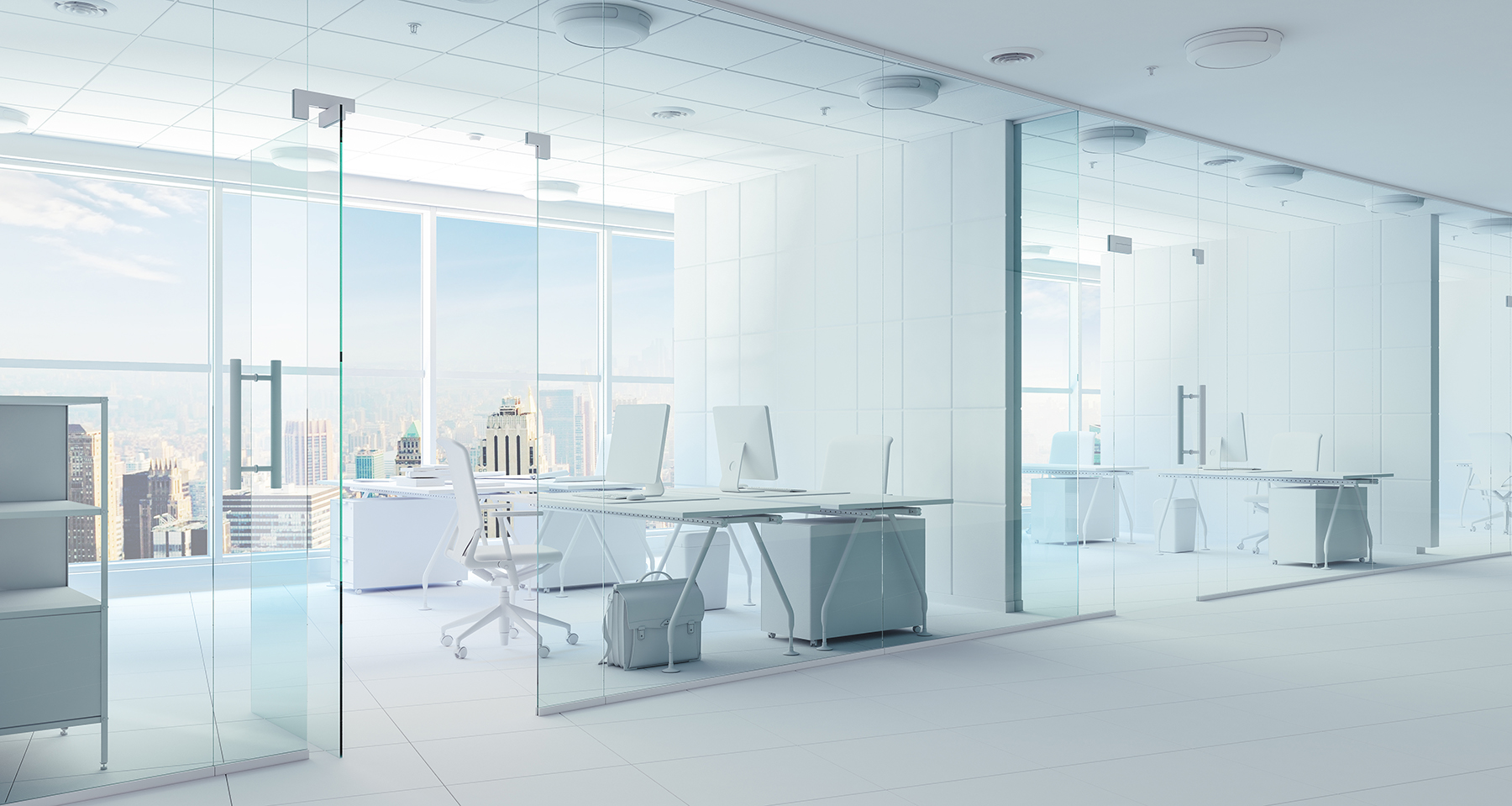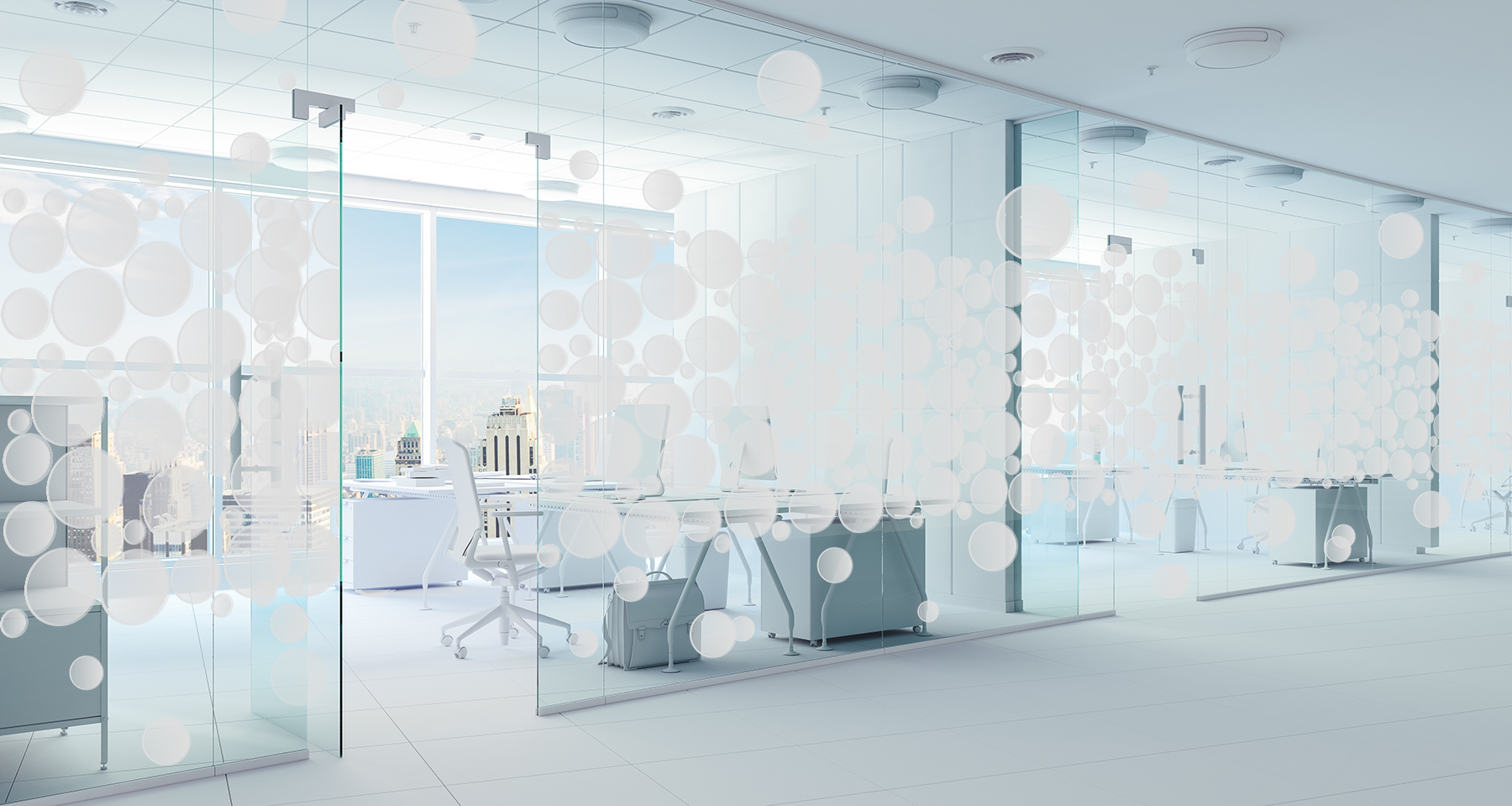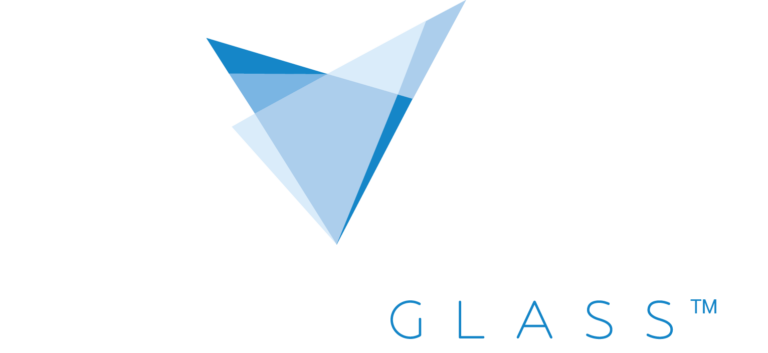Lamination
The ultimate choice for structural safety.
When uncompromising safety is the primary concern, laminated glass is the material of choice. In fact, it’s a universal building code requirement for commercial applications such as façades, entry doors and windows, interior walls, wall cladding, and balustrades.
Lamination uses interlayers to permanently bond two or more pieces of glass together, resulting in a single glass panel that is four to five times stronger than a monolithic tempered glass panel. Even if broken, the glass stays bonded together, so it is less likely to cause bodily harm.
There are three primary interlayer materials and each plays an integral role in defining the characteristics of the final product. The chart here shows the attributes that should be taken into consideration when choosing the best solution for any given application or design goal.
Fast laminated facts & frequently asked questions
The architectural glass industry has seen a growing interest in minimally-supported glass applications which include:
- Façades
- Ceilings and skylights
- Interior partitions
- Balustrades
- Frameless stair railings
- Canopies
The trend is for less metal around the edges of the laminated glass, the product choice of architects and designers for its ability to provide post breakage glass retention, making it the safest product for the applications mentioned above.
One of the primary objectives here at Vectra Glass is to produce laminated panels that are aesthetically pleasing. There are many moving parts that come into play including cutting tolerances, glass slippage during the laminating process, actual handling, edge polishing, and interlayer indexing with the glass. Rest assured that every effort is made to ensure all of these issues and edges align to an acceptable condition minimizing any mismatching or imperfect alignment.
Whether one exposed edge or all, your needs should be discussed with our production team prior to placing an order. We thank NGA and GANA for technical paper FB59-18 which provides great insight into this very important subject.
Water or water vapor can cause edge blush, which appears as a whitish haze around the glass edges. This can occur when unframed laminated glass edges are subjected to prolonged exposure to moisture, are left standing in continuous water contact, or when framed laminated glass systems have weep holes that are not draining properly. The extent of edge blush may vary depending on the environmental conditions and moisture intrusion and may change the adhesion characteristic between laminating interlayers and glass which could result in delamination over time. (NGA and GANA technical paper FB48-15.2020).
Caulks, sealants, tapes, gaskets and setting blocks all can potentially permeate into the laminate interlayer resulting in edge effects. The best way to avoid delamination is to verify compatibility of the glazing materials intended for use with the sealant and interlayer manufacturers. Sealants containing solvents and oil-based compounds are not recommended for use with laminated glass as well as some cleaning solutions resulting in prolonged contact with laminated glass edges.
Edge seal films may be used to minimize solvent and chemical penetration into the laminated glass edge.
For more information, please refer to ASTM C-1087 Standard Test Method for Determining Compatibility of Liquid-Applied Sealants with Accessories Used in Structural Glazing Systems.
| SGP | PVB | EVA | |
|---|---|---|---|
| Safety Glass | ✔ | ✔ | ✔ |
| Security Glass | ✔ | ||
| Interior Use | ✔ | ✔ | ✔ |
| Exterior Use | ✔ | ✔ | |
| Clear | ✔ | ✔ | ✔ |
| Tinted | ✔ | ✔ | |
| Decorative Interlayers, paper, wire mesh, printed PET Films | ✔ | ||
| Water / Moisture Resistance | high | poor | high |
| Sound Insulation / Acoustic | good | ||
| Yellowing Index | < 1.5 | 6-12 | n/a |
| Structural Performance | highest level | > EVA < SGP | < PVB |
| Rigidity | 100 x > PVB | ||
| Mechancial Properties / Bearing Capacity | 2x > PVB | ||
| Tear Strength | 5x > PVB | ||
| Flexibility / Bending Deflection | 1/4 of PVB |



